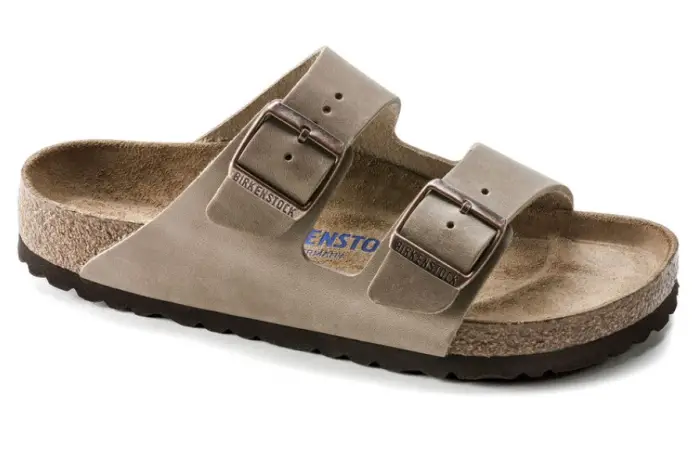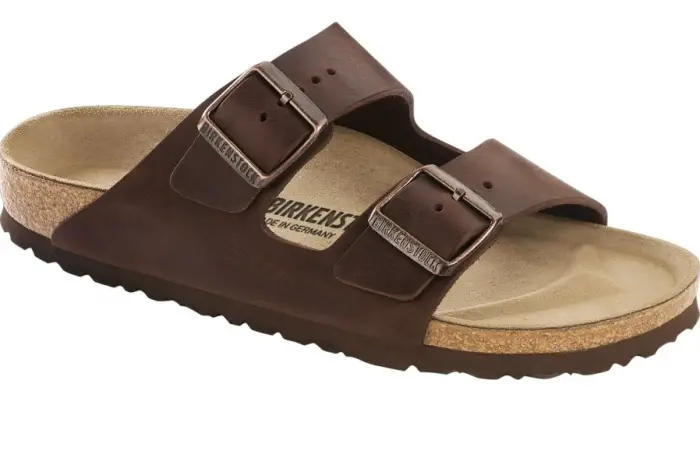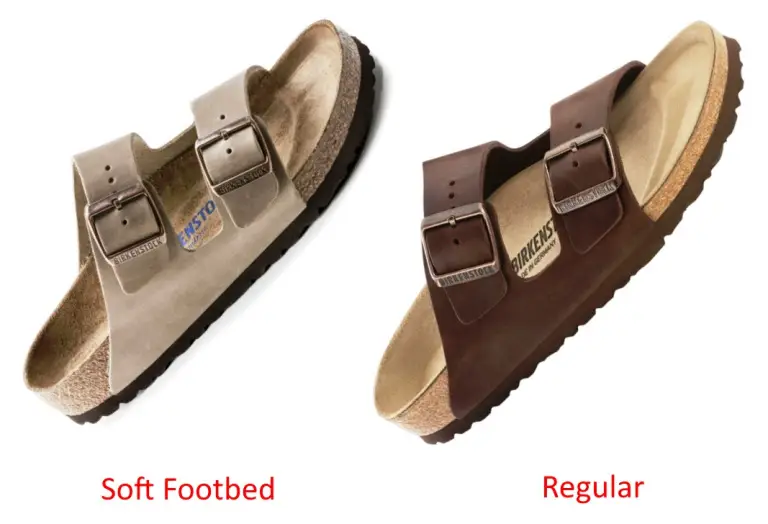Blog
Birkenstock Soft Footbed vs Regular: In-depth Comparison
When it comes down to Birkenstock soft footbed vs regular, which is your best bet? What’s the difference between them if the designs are almost identical? And, last but not least, do they have any disadvantages? This article will wrap everything up in a few sections.
Contents
Birkenstock Soft Footbed vs Regular: Similarities
Birkenstock is a popular brand, hence they have certain game-changer factors that make their products more recognized than others, and Birkenstock Footbed is one of them. Living up to the name, the footbed is insoles made to embrace and support your feet.
Within the seemingly simple shape lies a variety of details thoroughly calculated to fit perfectly and ensure nothing less than comfort. The complex structure might catch you by surprise, yet your body weight won’t be distributed properly without it.
Features of Birkenstock Soft Footbed & Regular
- Heel cup: As most problems with our feet come from the heels and directly affect the legs and the spine in a straight line, the heel cup is extremely important to maintain the natural state of the bones and support every step you take.
- Lateral longitudinal arch support: After your heel has got its necessary support, the rearfoot and the midfoot need their stabilization, so you can walk steadily with a nice posture.
- Medial longitudinal arch support: Following suit, it is arguably the part that concerns many buyers. It is responsible for underpinning the arch and adjusting the inner foot when lowering.
- Transverse arch support: As the spine of the footbed, this part plays a crucial role in generally supporting the arch and reducing pressure on the ball of your foot.
- Toe grip: Heading to the front, the toe grip with a prominent indentation keeps your toes relaxed against the instinctive gripping while you walk.
- Footbed edge: Belonging to the outer compositions but not inferior in terms of importance, the edge of the footbed shields the whole of your foot from possible damage from outside.
Materials of Soft Footbed & Regular Birkenstock
Birkenstock uses 4 materials for their legendary footbed, all of which have natural origins: cork, latex, jute, and suede.
- Cork: As the cushion, cork is an extremely suitable material. It has numerous pores to circulate air, which makes the footbed light and breathable. Heat and coldness will be insulated and absorbed sufficiently so your feet won’t ever feel uncomfortable.
- Latex: The granules of the cork will remain separate if not adhered to by latex.
- Jute: With two layers of jute, one as the foundation and one as the sides of the footbed. Jute is very durable and adsorbent, hence moisture and mold will be the last problem you need to worry about.
- Suede: As the lining, suede is the major factor in guaranteeing a pleasant climate for your feet. The fine fabric is utterly soft against your skin as well.
Benefits of Birkenstock Footbed

There are reasons why many buyers rely on Birkenstock:
- Durability: The brand has been around since 1774, being at the peak of quality means they are very good at what they do. They want customers to get the most out of their shoes and come back for more, hence they use nothing less than fine materials and smart designs.
- Value: We can all agree that whether it is soft vs regular Birkenstock or any other product line, the price is always slightly costly. But the value offered for that price is usually money spent well.
- Services: If you encounter any problem with your purchase, you can have it repaired instantly.
The regular footbed is the standard for all Birkenstock shoes to follow, thus the soft footbed has the same structure and material discussed above. However, additional details don’t necessarily mean it is better and perfect.
Differences Between Soft Footbed vs Regular Birkenstock
Now, the regular footbed is the heart of all Birkenstock creations, so the most noticeable difference between soft and regular footbeds is the extra foam layer. It was meant to serve the customers who need to feel supported and comfortable as soon as they put the shoes on.
The foam is a mass of air bubbles, positioned right between the suede and the cork layers. It means you will get more comfort, but the cork will be suppressed from molding to your feet.
If we are talking about the level of first-time comfort, a soft footbed will win by a landslide. Nevertheless, it will be a whole new story once the regular footbed has broken in since it would mold to your foot as if it was measured and made for you only. On the other hand, memory foam will always aim to regain its original state.
Birkenstock soft footbed vs regular sizing is another perspective we should consider while choosing between them too. At the same size, the soft footbed is bound to feel tighter than the regular footbed that needs to break in and adjust.
Check more: Birkibuc vs Birko Flor Birkenstock: Which To Choose?
Pros & Cons Of Soft Footbed Birkenstock
The most obvious downside of the Birkenstock footbed is it needs time for the cork layer to embrace the shape of your feet, and the soft footbed was created for the sole purpose of making up for the needed break-in time. You will get the comfort you want as soon as the shoes are out of the box and secured around your feet.
While the foam provides softness, it is not the same feeling you get from trainer shoes. Knowing foam texture, you would expect it to be sturdy enough to support your steps and grant health benefits. And this is why Birkenstock has a good reputation.
However, the disadvantage of the foam is its memory ability. When you take your shoes off, the imprint of your feet will fade off and the foam will return to its original state. Therefore, the first impression you have is extremely important, for you will have to stick to it for a long time.
Check The Soft Footbed Birkenstock on Amazon.com
Who should use the Soft Footbed?
People whose feet have a low arch will benefit the most from it. They can feel the arch support more clearly, and the footbed will adjust to them more quickly. With that said, a soft footbed is good for plantar fasciitis or sensitive feet in general.
Pros:
- It feels soft and sturdy at the same time right after it is out of the box.
- Sensitive feet need the kind of support it provides.
Cons:
- It doesn’t feel better as time goes on because of the memory foam.
Pros & Con Of Regular Footbed Birkenstock

Check The Regular Footbed Birkenstock on Amazon.com
Like most classic and high-end shoes, Birkenstock’s regular footbed needs time to mold to the shape of your feet and soften itself, or “break in”. Nonetheless, the wait might be worth it, because once they have overcome the tough phase, they are significantly more comfortable.
The original footbed can almost change your posture and your foot shape. As we previously mentioned, the footbed keeps your toes and your heels in a comfortable position.
Maybe you will find the sensation unfamiliar at first since common shoes can only do one thing – they either give you comfort or give your feet relaxation. Meanwhile, Birkenstock aspires to do both.
Who should use the Regular Footbed?
The regular footbed can handle both low and high arches, for they will eventually accommodate your feet.
Pros:
- It is a perfect fit for flat feet as well as arched feet once you pass the adjustment era.
- Great arch support.
- The most comfortable in the long run.
Cons:
- It requires a few weeks to break in.
Birkenstock Soft Footbed vs Regular Footbed: Which Is Better?
The winner between Birkenstock soft footbed vs regular footbed is up to you in the end. Our feet and our bodies are not the same, so it’s important to know what you truly need. A soft footbed is for you if you need comfort immediately, but a regular footbed is the one when you are ready for something long-term.

